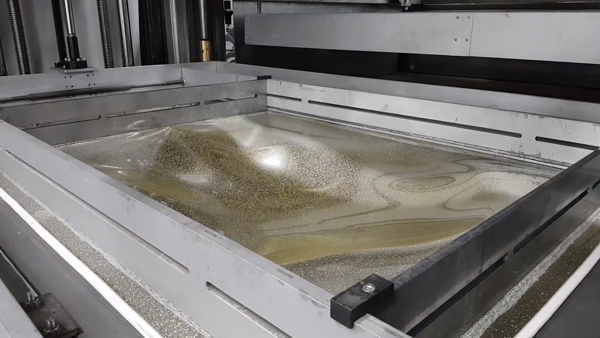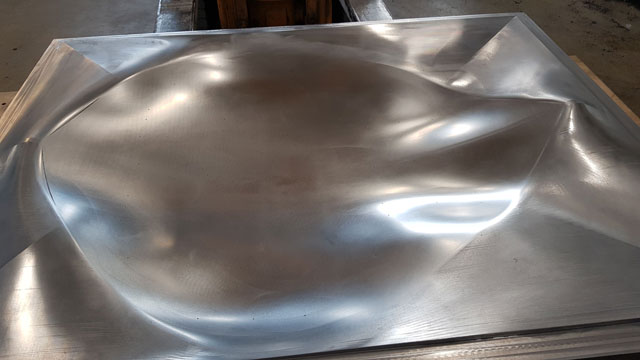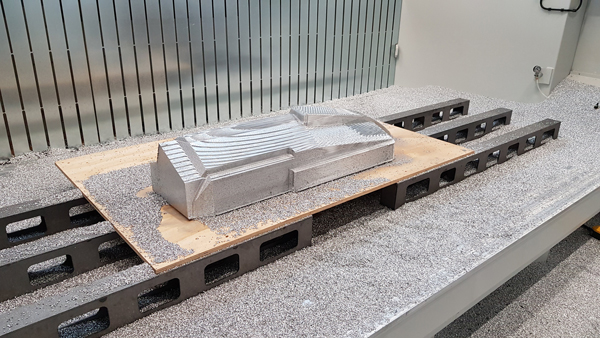Thermoforming Services
Vacuum Thermoforming
Vacuum forming is an industrial process vastly used for plastic materials manufacturing: it is an extremely precise, effective, and cheap method compared with other industrial manufacturing processes.
Vacuum forming requires a plastic sheet to be heated and then applied to a mould — when it’s hot enough to be pliable. The application of vacuum suction completes the forming operation, making the sheet perfectly adhere to the mould surface.
Once the plastic is thoroughly cooled and stabilized, the vacuum formed sheet is separated from the mould.


Vacuum forming advantages
The vacuum forming process offers several advantages and particular flexibility for what concerns the different industrial scale areas of application.
Among the most crucial advantages, there’s the use of very low pressures, if compared with the ones needed for other printing techniques — such as injection molding.
The use of low pressures is an overriding feature while choosing a printing method for serial manufacturing of plastic materials: it allows, in fact, the use of cheaper and easy-to-find materials for the construction of moulds.
The opportunity to design and produce a very cheap temporary mould allows the design stage to indulge in further freedom to experiment and find new creative and productive solutions. The production of prototypes and small series definitively benefits from the most recent progress we experience in vacuum forming manufacturing.
Another distinctive feature of vacuum forming is the high level of automation we can reach thanks to the development of robots and CNC machinery, allowing greater accuracy than other printing techniques. That’s why vacuum forming is the first choice when requiring a sub-millimeter dimensional and refinement precision.
There are many cases where vacuum forming turns out to be the best option: among them, the need for a particularly fast series production or fast and effective prototyping.
Vacuum forming allows as well the highest productive flexibility, and it’s the only manufacturing process to allow the processing of particular gauges and highly detailed surfaces.
Another special vacuum forming feature is the possibility to process coextruded items composed of different materials with various technical.
Vacuum thermoforming allows for more than millimeter precision and a speed of execution unmatched compared to other production techniques.
The vacuum forming process steps
As a long-term specialized company, we have defined a production method that allows us to perform most of the production process within our facilities, offering the clients the highest standard quality down to the smallest details.
Once the piece being produced is defined, it’s time to design and manufacture the mould. Since we can work with cheap and malleable materials such as wood and epoxy resins, we can test several prototypes’ proper running before getting to the actual industrial production with the final mould.
Once the temporary mould is tested and fixed, we build the ultimate mould, the one that will get into the automated process of industrial vacuum forming. Moulds can be made of aluminium or thermo-resistant resin (HDT) with aluminium filler, depending on production requirements.
When a particular hardness and wear resistance of the mould is needed, then aluminium is a preferable material: that’s the case for those orders needing remarkably large quantities of pieces to produce.
Vacuum forming: the manufacturing process
Vacuum forming process involves several industrial manufacturing steps, most of which depend on the kind of machinery the company has in place. As mentioned before, the degree of specialization in terms of automation is crucial for this category of manufacturing processes: there can be huge differences in the landscape of vacuum forming production firms, both on a global and local scale.
Apart from machinery equipment, the manufacturing process consists of several stages:
- Clamping: the first step is to anchor the plastic sheet to the vacuum forming machine; this is commonly approached as an automated operation, for it’s crucial for the final accuracy (both in terms of measurements and shapes) of the workpiece;
- Heating: for an ideal vacuum forming, it’s important that the sheet is heated consistently both on the whole surface and for the entire gauge. When handling high-temperature materials or pieces with a critical shaping temperature, it’s always recommended the use of double heating machinery, which ensures a more uniform heating and faster firing cycles;
- Vacuum: the proper forming occurs through the vacuum effect. A pump extracts the air between the mould and the plastic sheet, making it adhere to the wanted shape;
- Finishing: once the formed workpiece is cooled and stabilized, it is separated from the mould. It’s possible in this production phase to further finish the product through trimming, milling, and decorative
Vacuum forming allows a sub-millimeters accuracy and a really fast execution of the process. Of course, it is the ideal solution when needing to let the rapid prototyping operations open to changes or when working with a production that requires several tests and trials.

